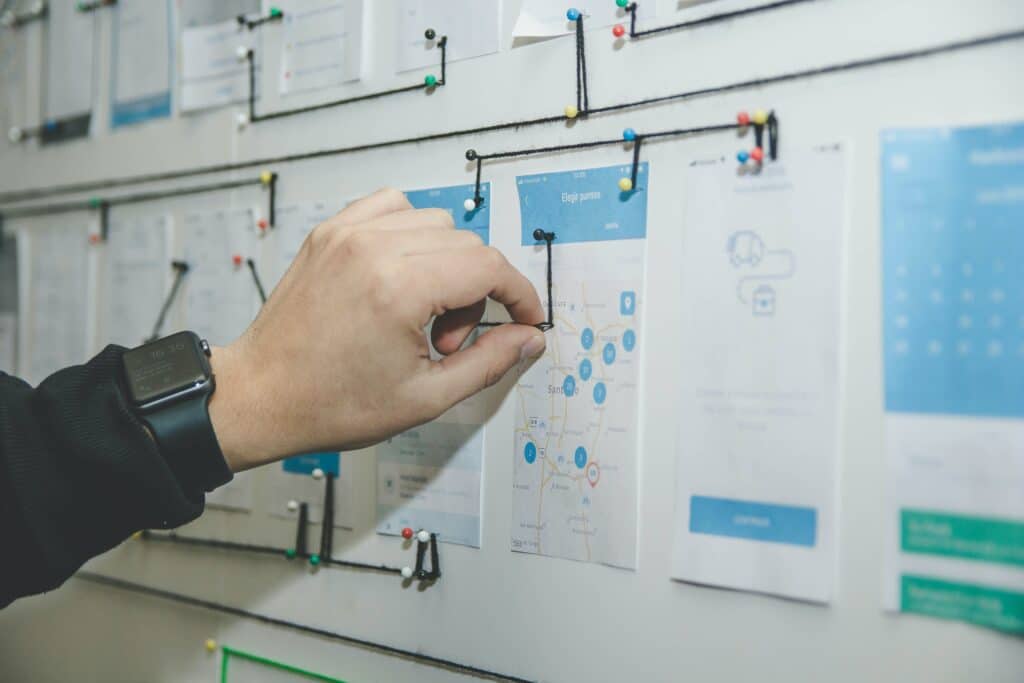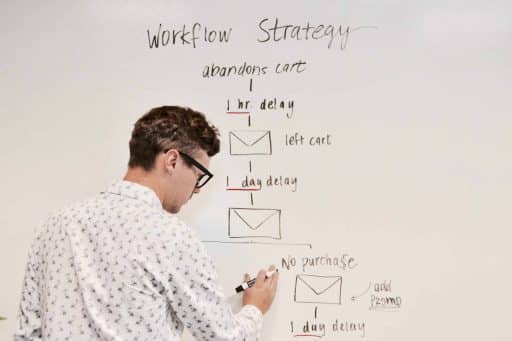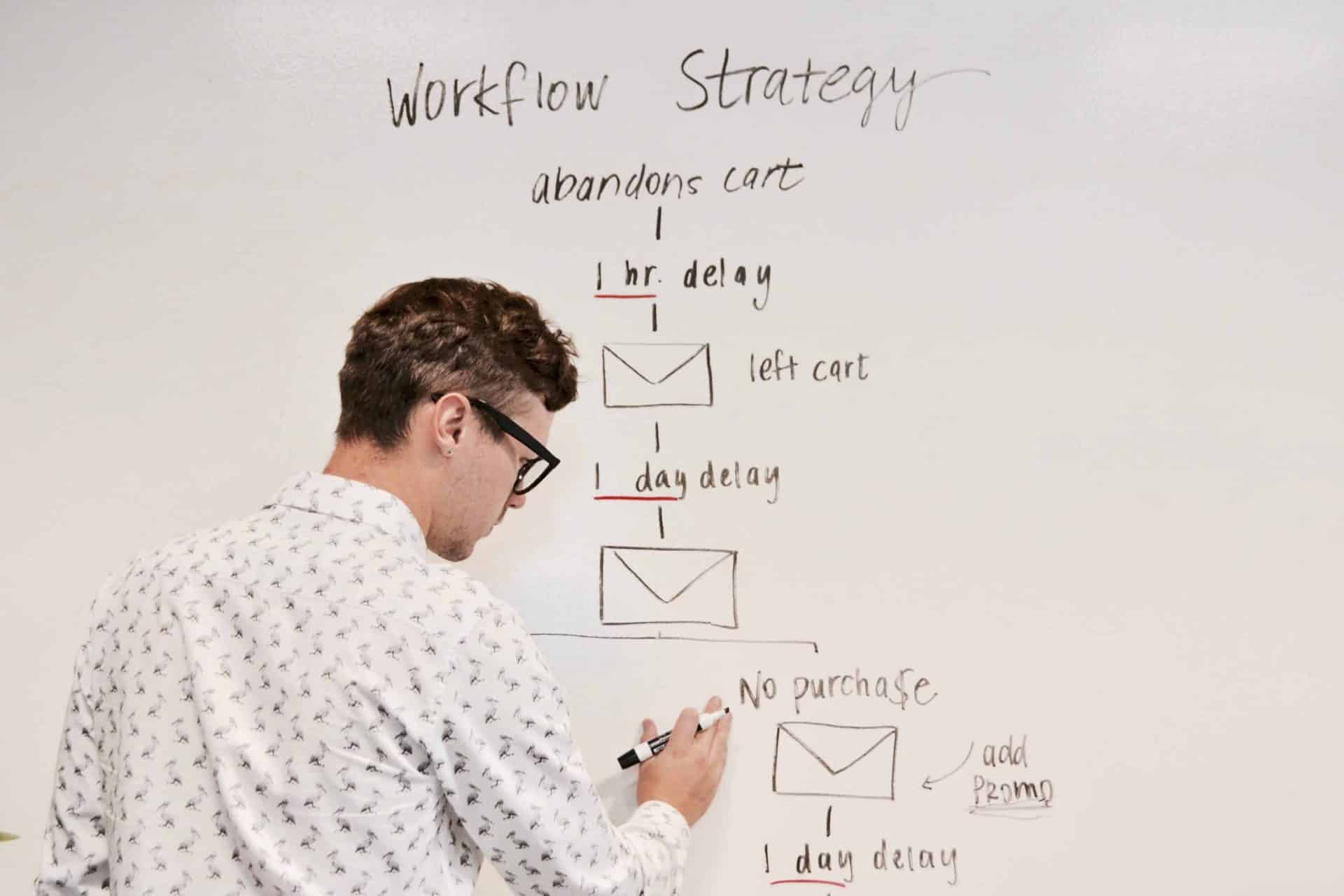
What does it mean to streamline your workflow?:
Streamlining your workflow means simplifying, optimise, and improving the efficiency of your work process, so you can accomplish tasks more quickly and with less effort. This involves identifying and eliminating any unnecessary steps, tasks or activities that are not adding value to the process, as well as automating repetitive tasks and using technology to your advantage. By streamlining your workflow, you can save time, reduce stress, and improve the quality of your work output.
“Efficient workflow is the product of intelligent effort and the result of careful planning.”
Paul J. Meyer
7 Tips for Better Workflow and Efficiency:
Streamlining your workflow involves setting clear goals, prioritising tasks, using technology and automation, minimising distractions, taking breaks, and regularly evaluating progress. By implementing these tips, you can work smarter, increase productivity, and achieve greater success.
1.Set clear goals:
- Define what you want to achieve and make sure your goals are specific, measurable, achievable, relevant, and time-bound (SMART).
- Write your goals down in a journal or planner and keep them visible to remind yourself of what you’re working towards.
- Break down larger goals into smaller, more manageable steps to make them less overwhelming.
- Regularly evaluate your progress towards your goals and adjust them as needed.
2. Prioritise your tasks:
- Make a list of all the tasks you need to complete and evaluate their importance and urgency.
- Use a priority matrix, such as the Eisenhower matrix, to determine which tasks should be done first.
- Focus on completing high-priority tasks before moving on to lower-priority tasks.
- Re-evaluate your priorities regularly to make sure you’re on track.
3. Use technology to your advantage:
- Identify tools and software that can help you be more productive, such as project management software or time-tracking apps.
- Use apps and software to organise your tasks and schedule, such as Google Calendar or Trello.
- Take advantage of online collaboration tools, such as Slack or Zoom, to work efficiently with others.
- Stay up to date with new productivity tools and trends to find what works best for you.
4. Automate repetitive tasks
- Identify tasks that you can automate using technology, such as sending automated email responses or scheduling social media posts.
- Research and implement automation tools that can save you time and effort, such as IFTTT or Zapier.
- Make sure to test and monitor any automation tools you use to ensure they are working correctly and efficiently.
5. Minimise distractions
- Turn off notifications on your phone and computer or use apps that limit your access to distracting websites or social media.
- Designate specific times for checking email and messages to avoid getting distracted throughout the day.
- Use noise-cancelling headphones or a white noise machine to block out distracting noise.
- Consider creating a designated workspace where you can focus on your work without distractions.
6. Take breaks:
- Schedule breaks into your workday to avoid burnout and maintain productivity.
- Take short breaks every hour or so to rest your eyes and stretch your legs.
- Take longer breaks throughout the day to recharge and do something you enjoy, such as going for a walk or reading a book.
- Experiment with different break schedules to find what works best for you.
7. Evaluate your progress:
- Regularly review your progress towards your goals to identify areas where you’ve made progress and areas where you need to improve.
- Celebrate your achievements and use them as motivation to continue working towards your goals.
- Adjust your workflow and goals as needed to stay on track and make the most of your time and effort.
In conclusion, streamlining your workflow is essential for achieving greater productivity, success, and overall fulfilment in both your personal and professional life. By adopting a range of strategies, such as setting clear goals, prioritising tasks, using technology and automation tools, minimising distractions, taking breaks, and regularly evaluating progress, you can optimise your workflow and enhance your efficiency.
While it may take some time and effort to incorporate these strategies into your workflow, the benefits are significant. By streamlining your work processes, you can increase your productivity, reduce stress and burnout, and achieve greater success with less effort. Ultimately, implementing these tips can help you maximise your potential and achieve greater fulfilment in all areas of your life.






